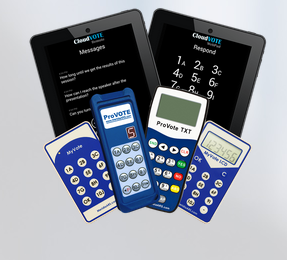Technology has created endless opportunities to enhance the efficiency of human tasks. Computerized audience response systems are one such technology that can enhance presentations to help audience members learn with more efficiency, but only when they are used correctly.
The main benefit of computerized audience response systems reside with how they complement learning through active learning. They allow the individual to think about the facts that they have learned, which allows them to understand that information to a greater degree than if they were just presented details to memorize.
The challenge in utilizing computerized audience response systems is that they must be integrated into presentations rather than tacked on. This requires the technology to be used as a presentation aid much like a slides or animations are.
Let’s explore some tips to make the use of these response systems more fluid and efficient.
1. Keep Questions Short and Simple
The biggest challenge with response systems is their relatively limited capacity for audience input. This means that questions that are focused with shorter answers often have the best legibility, which in turn produces the best results with any given audience.
2. Maintain a Maximum of Five Answer Options
Too many answer choices can have just as much of a negative effect as complicated questions. They can confuse the audience or diminish the effectiveness of a response system.
Allow for no more than five total answer choices of any given question. This will ensure that audience members promptly choose an answer to ensure that the response systems continues to run smoothly.
3. Simple Questions Work Best
Creating complex questions for computerized audience response systems often produces poor results. Audience members become bewildered while trying to digest a large amount of information in a short time, which means that the response rate usually drops and the system itself becomes significantly less effective.
Shorter questions keep the session enjoyable for audience members while allowing them to focus on specific pieces of information. This improves the efficiency of the session and keeps the attention of audience members better.
4. Choice Selection Stays Straightforward
While trick questions and multi-stage voting may seem to promote more thinking, they generally cause respondents to become confused. This may discourage them and diminish the effectiveness of the computerized audience response system.
Quick questions with relatively straightforward answers stimulate thought far more effectively. They allow respondents to think about tangible issues while giving the person directing the session the ability to cover as many points as needed.
5. Discussion Reinforces Response System Usage
Learning is a complex process. After acquiring information, individuals often need to discuss what they have learned to truly understand a new topic.
Allotting for discussion time reinforces any learning that happens. These discussions are most effective when they occur before or after an computerized audience response system prompt is used.
6. Test the System Beforehand
computerized audience response systems can be prone to interference. Microwave radiation, waves emitted from certain types of fluorescent lighting and cellphones can all cause certain components of a response system to falter.
Testing the system comprehensively ensures that the highest degree of interaction can occur with as few interruptions as possible. This allow the response system to enhance the learning process even further by reducing the number of distractions.
7. Rehearsal Makes for Perfect Presentations
The use of computerized audience response systems may not be the most natural thing for the person giving the lecture. Integrating them is a learned skill in the same way that using a remote to change presentation slides is.
Rehearsing beforehand will increase the effectiveness of the response system by giving the lecturer a better feel for how the process should flow.
Rehearsing with a small group of individuals can make presentations in front of large audiences significantly more effective.
8. Integrate Use of Computerized Audience Response Systems
While computerized audience response systems are designed to increase the overall effectiveness of presentations, they may not be necessary for every single piece of information. Overusing them can slow down a presentation, detract from the benefits of discussion, and create numerous problems that otherwise wouldn’t exist.
This makes learning how to integrate this technology with the rest of the presentations integral to ensuring that the audience benefits from it. Use the system only when it is appropriate.
9. Clear Instructions
computerized audience response systems encourage audience members to respond due to their relatively anonymous nature. This helps every member of the audience to speak up, but only when the instructions on when and how to do so are made clear.
Instructing the audience with clear directions is a vital part of ensuring that computerized audience response systems can be leveraged to their full potential.
10. Encourage Active Discussions Alongside Responses
The value of active discussions cannot be overstated. They reinforce the knowledge that audience members acquire, which in turn allows them to better utilize the knowledge they acquire.
It also gives audience members a significantly better reason to pay attention during lectures. They may be more prone to remembering small but important pieces of information, which in turn increases the effectiveness of the computerized audience response system even more.
Making Computerized Audience Response Systems Even More Effective
While computerized audience response systems can greatly benefit lectures and other types of learning environments, utilizing them is a learned skill. Practice in creating effective prompts and answers, integrating lectures with response systems as aids, and encouraging discussion during lectures will significantly improve the utility that computerized audience response systems provide.







Recent Comments